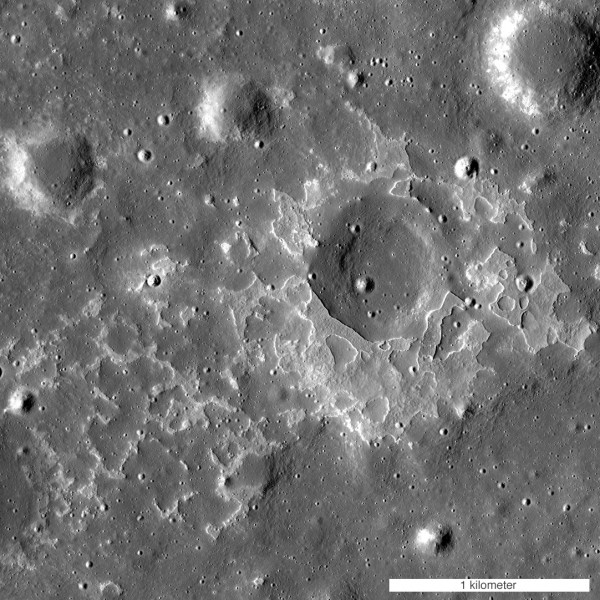Lunar Volcanoes were Erupting when Dinosaurs Ruled the Earth
| Marc Maligalig | | Oct 15, 2014 03:07 AM EDT |
(Photo : Wikimedia Commons) Ina in a photo taken by Apollo 15 astronauts.
Geologists have discovered evidence that suggests the Moon had active volcanoes more recently than thought possible.
The National Aeronautics and Space Administration's Lunar Reconnaissance Orbiter satellite found strong evidence that volcanic activity on the Moon gradually slowed down instead of abruptly halting a billion years ago.
Like Us on Facebook
Data suggests the interior of the Moon is most probably not at the cold temperature scientists had anticipated.
Some of the unique rock deposit evidence seen by LRO could be as young as 100 million years. Using the Earth as context, 100 million years ago, dinosaurs still roamed the world. Other lunar deposits might even be younger, just 50 million years old.
"This finding is the kind of science that is literally going to make geologists rewrite the textbooks about the moon," said John Keller, LRO project scientist at NASA's Goddard Space Flight Centre.
Researchers inferred the recent volcanic activity of the Moon from rough and blocky rock deposits (referred to as irregular mare patches) next to a combination of smooth, rounded, shallow mounds.
On July 30, 1971, Apollo 15 astronauts took a photo of Ina, a depression in the crater, Lacus Felicitatis. Scientists at the time held the opinion that Ina was the result of a gas eruption 10 million years ago.
Scientists believed Ina was a unique anomaly until researchers from the Westfälische Wilhelms-Universität Münster in Germany and Arizona State University started viewing similar parts of the Moon in high-resolution images taken by the LRO's two Narrow Angle Cameras. A total of 70 irregular mare patches were found on the near side of the Moon.
A number of the rocky deposits strongly suggest the last string of volcanoes on the Moon were not spontaneous accidents, but significant occurrences in the geological history of the Moon.
Tagsmoon, Moon volcano, Volcano, Lunar Reconnaissance Orbiter, National Aeronautics and Space Administration, NASA, Ina
©2015 Chinatopix All rights reserved. Do not reproduce without permission
EDITOR'S PICKS
-

Did the Trump administration just announce plans for a trade war with ‘hostile’ China and Russia?
-

US Senate passes Taiwan travel bill slammed by China
-

As Yan Sihong’s family grieves, here are other Chinese students who went missing abroad. Some have never been found
-

Beijing blasts Western critics who ‘smear China’ with the term sharp power
-

China Envoy Seeks to Defuse Tensions With U.S. as a Trade War Brews
-

Singapore's Deputy PM Provides Bitcoin Vote of Confidence Amid China's Blanket Bans
-

China warns investors over risks in overseas virtual currency trading
-

Chinese government most trustworthy: survey
-

Kashima Antlers On Course For Back-To-Back Titles
MOST POPULAR
LATEST NEWS
Zhou Yongkang: China's Former Security Chief Sentenced to Life in Prison

China's former Chief of the Ministry of Public Security, Zhou Yongkang, has been given a life sentence after he was found guilty of abusing his office, bribery and deliberately ... Full Article
TRENDING STORY

China Pork Prices Expected to Stabilize As The Supplies Recover

Elephone P9000 Smartphone is now on Sale on Amazon India

There's a Big Chance Cliffhangers Won't Still Be Resolved When Grey's Anatomy Season 13 Returns

Supreme Court Ruled on Samsung vs Apple Dispute for Patent Infringement

Microsoft Surface Pro 5 Rumors and Release Date: What is the Latest?










